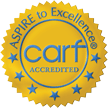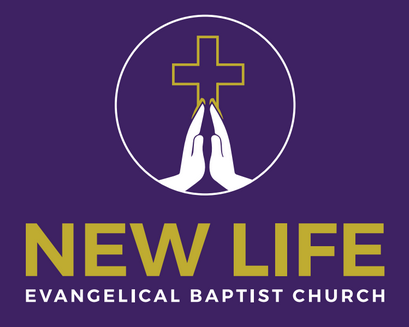The Calculus Of Substance Abuse Recovery
(Fourth in a series of reports from the front line of the battle against heroin.)
Yesterday, I introduced the concept that any inner-city methadone clinic, like Turning Point, is really two clinics: A good clinic, for those who truly seek recovery, and a bad clinic for those who simply did not have money to buy drugs on a particular day. Of course, we probably all know that such a dichotomy is an exaggeration, and that patients in treatment constitute a continuum of “seriousness” toward their recovery.
Now, why should the bad clinic predominate? Why should those unrepented addicts so outnumber those who are serious about their recovery? After counseling and ministering to addicts for 30 years, I have come to believe that many policy makers do not fully understand the answer. Which is really quite simple: The calculus of recovery for most addicts simply does not produce the kind of perceived net benefit that would make all the hard work associated with changing their entire lives worthwhile. The “economics” are just not there.
I recently returned from visiting friends in China. Like most of us, I had (still do) little to no facility with using chopsticks. Having used a knife and fork for, lo, these 60 years, that should come as no surprise. A knife and fork is all I have known, and it’s worked OK for me. Accordingly, not only do I have no facility with chopsticks, I have very little motivation to develop such. It’s the same for lifelong heroin addicts: They require a compelling reason to change. The most compelling reason would be provided by withholding welfare money for failed drug tests. That concept will be explored in the seventh article in this series.
For now, let’s think about who are lifelong, inner-city drug addicts and their mentality toward treatment.
- Almost all of those in treatment, and who will remain so for any time sufficient for recovery, are over about 40 years of age. It simply takes that long for most addicts to get tired of their lives of addiction. So, this is the age group that we will discuss here.
- These folks have typically known nothing but a life of drugs and getting high since they were maybe 10, 12 or 15 years old. Generally, most or all their family and friends are drug addicts, and they have no jobs or education or other interests or any realistic, near term prospects for such. Recovery, obviously, requires a total transformation of every aspect of their lives. This is a lot to expect from anyone!
- But, you wonder, don’t the addicts see and want the great benefits that are available to them if they give up heroin? Well, the answer is usually “no.” The same as me not giving up my knife and fork.
- Ok, can’t they make new friends and find other things to do? Not readily. There are probably not many non-addicts who want former addicts as friends, and the list of worthwhile recreational or other pursuits (such as jobs) potentially open to former addicts in the inner city is not a long one.
- Don’t they at least want to live longer lives, avoiding the hassle and hazards of having continually to find money to buy heroin, injecting it, etc.? The answer here, as well, is usually “no.” Most lifelong addicts have every chronic, and life-threatening disease imaginable—HIV, Hepatitis C, cirrhosis, diabetes, heart disease, COPD, kidney disease. The list goes on and on. Statistically, heroin or not, they are not likely to live beyond their 50s. And, after finding money to buy drugs and injecting heroin for perhaps 20 plus years, they’ve probably gotten pretty good at doing so. Or at least so they think.
The point of all this is straightforward. Although I am not suggesting, of course, that prospective methadone patients actually think the matter through in such an analytical way as I have described, it is unquestionable that the costs versus benefits perceived by the addict do not make the prospect of fighting the battle to cease drug use all that compelling. And, if they have welfare money to pay for drugs, that makes the calculus of giving up drugs vastly less compelling still. What other explanation could there be for the wholesale unwillingness of inner-city addicts not to want to cease drug use? For heroin, at least, there is a cheap, fairly safe, drug that is a near-perfect substitute, which will eliminate withdrawal symptoms, cravings and even block the effect of heroin. Among all drug addicts, heroin addicts, therefore, are the MOST treatable! Or at least would be, if we had suitable policies in place.
To say this a better way, you can’t remove something so central to the life of an addict as that on which his or her whole life has been focused for decades and not replace it with something else. That would be like taking away my knife and fork and not even giving me chopsticks! Surprisingly, what the Alcoholics Anonymous folks taught us 80 years ago is just as true today with drug addicts. Whether one is religiously-minded or not, even the most devout atheist, if he’s honest, can perhaps appreciate that a person having lived for decades a life of total self-absorption and drug use is going to have to learn to focus on something else. And for us at Turning Point, that means the Church. I try to be as ecumenical as anyone else in my thinking. Our faith-based program is optional. But, quite legitimately, for most lifelong inner-city heroin addicts, who probably have no family or anything else of substance in their lives (or the near term prospect for such), the one thing that might make recovery compelling is the Church. New Life Evangelical Baptist Church, of which I am Sr. Pastor, has been described as the only church ever, anywhere, to truly open its doors to heroin addicts.
Conclusion: The Church is an integral part of any realistic, inner-city approach to initiate and sustain recovery from drug addiction.
Yesterday, I argued that the bad clinic is of huge benefit to the community. Tomorrow, I will explore that in more detail, and address why it is, then, that communities (quite understandably) are not exactly overjoyed when a new methadone clinic opens its doors.
Rev. Milton E. Williams
President, Turning Point Clinic
Sr. Pastor, New Life Evangelical Baptist Church



